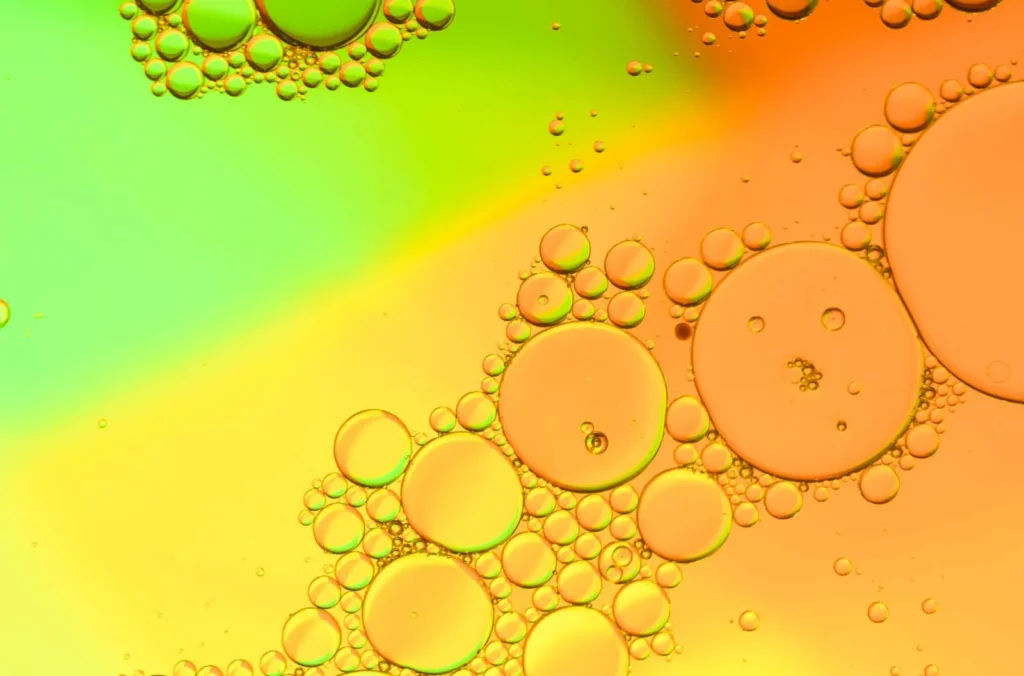How Defoamers Enhance Efficiency in Manufacturing and Production
How Defoamers Enhance Efficiency in Manufacturing and Production
Blog Article
Picking the Right Defoamer for Your Certain Application Needs
Picking the appropriate defoamer for certain application demands is a nuanced process that requires cautious factor to consider of multiple aspects, such as the foam operating, type, and medium problems. Understanding the nuances of defoamer efficiency-- including rate and perseverance-- while also accounting for environmental and governing variables is essential.
Comprehending Foam Formation
Foam development happens when gas is entraped within a fluid, producing a steady structure of bubbles. This sensation can considerably impact various commercial processes, especially in markets such as food manufacturing, drugs, and wastewater therapy. The visibility of foam can impede blending, reduce item top quality, and even bring about operational ineffectiveness.
Foam generally develops as a result of a mix of aspects, including surface-active representatives, agitation, and the attributes of the fluid phase. Surfactants reduced the surface stress of the liquid, helping with the formation of bubbles that can integrate and stabilize. Anxiety, whether from mechanical mixing or gas introduction, improves bubble formation, bring about boosted foam quantity.
Understanding the auto mechanics of foam development is critical for industries intending to maximize their processes. By determining the details problems that promote foam generation, organizations can execute approaches to mitigate its effects.
Kinds of Defoamers Available
Numerous sorts of defoamers are available to resolve the obstacles postured by foam in commercial applications. defoamers. Generally categorized, defoamers come under 3 classifications: silicone-based, non-silicone-based, and all-natural defoamers
Silicone-based defoamers are renowned for their performance and stability across a wide array of temperatures and pH degrees. They are typically utilized in applications where strong foam reductions is needed, such as in adhesives, paints, and finishings. Their reduced surface area tension enables fast foam collapse.
Non-silicone-based defoamers, often made from organic compounds, supply a choice for applications sensitive to silicone deposits. These defoamers can be additional separated into polyether and ester kinds, each customized to fulfill details formula requirements. Non-silicone defoamers are regularly made use of in food handling and individual treatment items as a result of their compatibility with various solutions.
All-natural defoamers, originated from plant or animal sources, are obtaining traction as a result of their environment-friendly account. These products are particularly appealing in applications where regulatory compliance and sustainability are extremely important, such as in agrochemicals and biotechnology.
Selecting the appropriate kind of defoamer is critical for enhancing efficiency and making sure compatibility with certain applications.
Key Application Considerations
When choosing a defoamer, it is important to think about the details application demands to make sure optimum performance. defoamers. Different industries have distinctive demands, such as food handling, drugs, or wastewater therapy, and each application might call for distinct defoaming residential properties
Trick variables to examine consist of the tool in which the defoamer will certainly be utilized, whether it is water-based, oil-based, or a mix thereof. The temperature and pH levels of the application can also significantly influence the performance of a defoamer. In addition, compatibility with other chemicals present in the system is critical to avoid damaging reactions that can endanger performance.
Another crucial consideration is the frothing habits of the details system. Recognizing whether the foam develops quickly or gradually can direct the choice of a defoamer that targets the origin cause successfully. The click site wanted speed of defoaming can affect the selection, as some applications call for quick activity while others might endure slower defoaming processes.
Finally, environmental and governing factors to consider need to not be overlooked, particularly in sectors with rigorous compliance requirements. Picking a defoamer that aligns with these aspects guarantees both effectiveness and security in the application.

Performance Testing Techniques
Assessing the performance of a this website defoamer calls for a methodical approach to testing that accurately determines its performance in specific applications. Numerous efficiency screening approaches can be used to establish the optimum defoamer for a given formula.
One common approach is the bubble test, which reviews the defoamer's capability to minimize foam volume over time. This test entails generating a stable foam and after that adding the defoamer to observe the price of foam collapse.

Eventually, choosing the suitable efficiency testing approach depends on the particular application and the sort of foam being dealt with. Each method supplies beneficial information that can direct solution adjustments and boost the performance of the defoamer in useful applications.
Finest Practices for Choice


Following, take into consideration the defoamer's efficiency in regards to speed of action and determination. A quick-acting defoamer may be needed for procedures where rapid foam reductions is critical, while an extra persistent formulation could be required for extended foam control. Additionally, examine the ecological effect of the defoamer, including its my company biodegradability and any regulative compliance requirements.
Conduct trials with selected defoamers to identify their efficiency in real-world conditions. This step is crucial to verify that the selected item satisfies performance expectations. Seek advice from with makers or distributors for technological assistance and guidance, as they can offer important insights into product formulations and application strategies. By adhering to these finest practices, you can boost foam control efficiency and ensure the durability of your processes.
Conclusion
In recap, choosing the appropriate defoamer necessitates an extensive analysis of various factors, consisting of foam kind, tool, operating problems, and environmental factors to consider. Understanding the distinct attributes of foam formation and the available defoamer choices is crucial.
Choosing the suitable defoamer for details application demands is a nuanced process that requires careful consideration of several variables, such as the foam operating, medium, and kind conditions.Choosing the ideal defoamer is crucial for achieving ideal efficiency in foam control applications. A quick-acting defoamer might be needed for processes where fast foam suppression is essential, while a more persistent formulation may be needed for long term foam control.In recap, picking the suitable defoamer requires a detailed assessment of various variables, consisting of foam kind, tool, operating problems, and ecological factors to consider. Comprehending the unique features of foam formation and the available defoamer alternatives is crucial.
Report this page